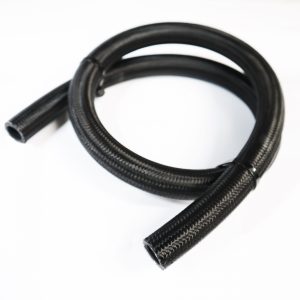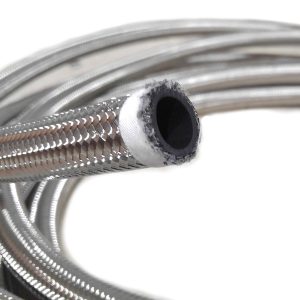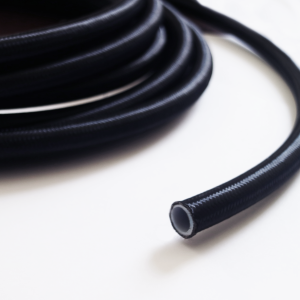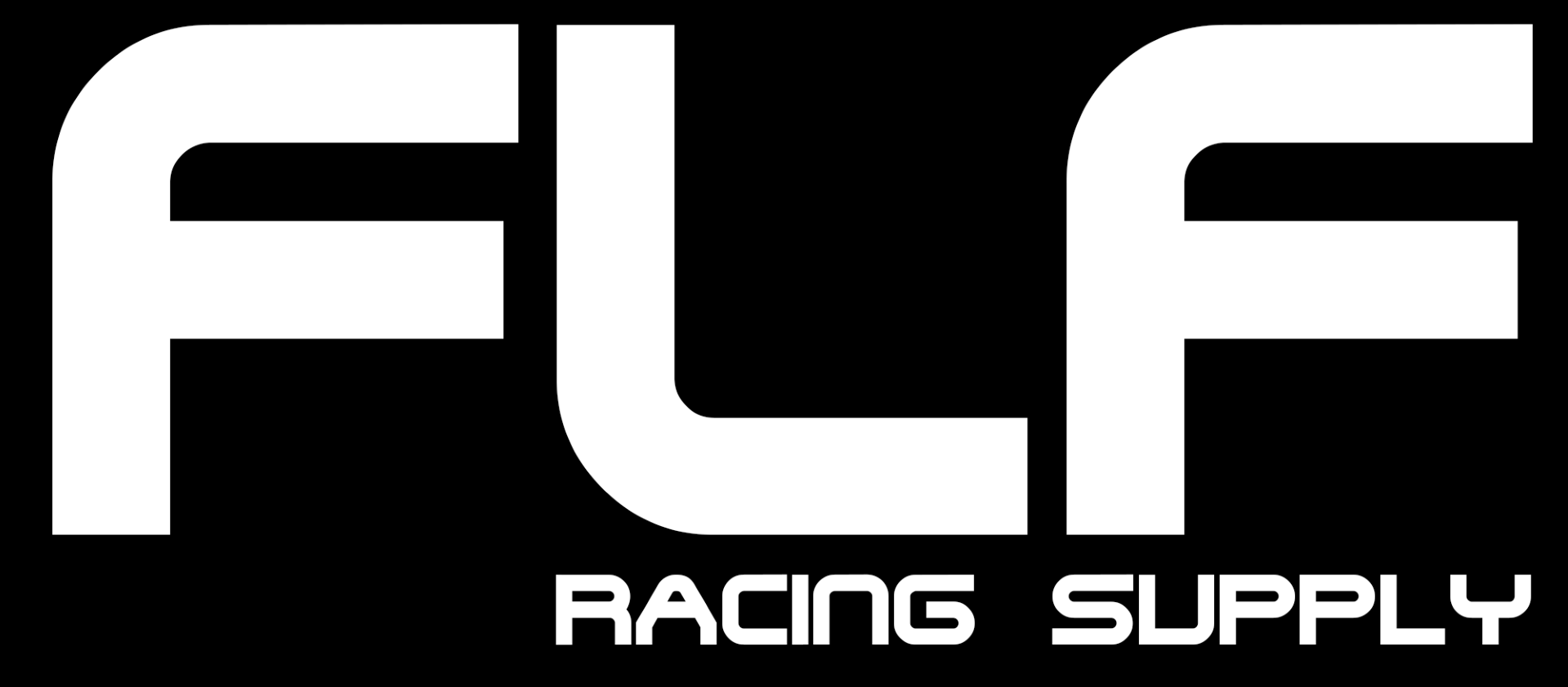Selecting the right type of hose for your application is incredibly important for ensuring proper performance and reliability. Picking the wrong hose can result in leaks, poor performance, reliability problems, or in extreme cases, a very serious fire.
This detailed guide will assist you with selecting the right hose for your application. We carry multiple different types of hose that can be used for various automotive motorsport applications for fuel, oil, coolant, or other situations.
Factors to consider
Operating Pressure
Pressure is an important factor to consider with to your application. If you’re using a hose for an application outside it’s intended pressure, it can leak or burst, resulting in serious damage. Look up what pressures you’re going to be working with on your application and select the right hose for the job. For example, you may want to use FLF hose for your power steering system. Many power steering systems can generate pressures as high as 1000 to 2000 PSI, maybe more. A nylon braided rubber hose would not be a good choice for this, as many of them max out at 500 PSI depending on the size. A better hose for this application would be PTFE hose.
Operating Temperature
Temperatures of the fluids inside the hose are also incredibly important to consider. Our hoses are rated for high temperatures, so most applications should be compatible with our products, but it’s still important to check what the expected temperatures of your fluids are during both normal operating conditions AND conditions under failure. A failing engine or transmission can have oil temps reach extreme levels, which could damage the hose and result in further equipment damage. If the hose is exposed to temperatures exceeding the operating temperature rating, we recommend replacing it for safety.
Chemical Compatibility
Ensuring that the hose is chemically compatible with the fluids you’re using ensures that the hose will not break down or release parts of the hose into the flow, potentially causing damage further downstream. For example, ethanol and methanol blended fuels are extremely corrosive, and although they help us make a ton of power, these fuels can damage hoses made of rubber. The recommended hose for this application uses a PTFE liner.
Another consideration is permeability. Vapors and gases can be absorbed by the liners inside of hoses, and possibly pass through the material itself. This process does not damage the hose, but it can result in a smell, particularly if the vehicle is kept in an enclosed space like a garage. We recommend draining hoses if the vehicle is not intended to be driven for more than 45 days. Using the right type of hose can limit or nearly eliminate hose permeation.
Environment
The outside environment that the hose is sitting in is a strong factor to consider as well. Not just the outdoors, but also where it is located on the car. For example, if you are running oil hoses for a turbo application, it may be best to use PTFE hoses if possible. These hoses are better suited to the extreme heat of a turbocharger’s exhaust system. A nylon braided rubber hose CAN work, but in time the heat can dry out the hose and cause it to crack or fail, resulting in engine damage or a fire. After all, the flash point of engine oil is about 400 degrees Fahrenheit, but turbochargers regularly see temperatures exceeding 800 degrees Fahrenheit.
Nylon Braided Rubber Hose

This hose features a CPE blended synthetic rubber that has excellent chemical compatibility, a stainless steel inner braid for strong reinforcement, and a nylon outer braid for abrasion resistance and protection. It is very light weight and suitable for many applications.
Compatible fluids
Gasoline, diesel, oil, coolant, and water
Recommended applications
Vacuum (air only), cooling systems, crankcase ventilation, fuel systems, oil systems, catch can systems, and turbo oil drain (if hose is not in close proximity to manifold and covered in heat protection sleeve)
Not recommended for
Extremely high temperatures (such as near exhaust systems), extremely high pressures (such as power steering high pressure systems), braking systems, dry sump suction hoses
| Part number | Hose ID | OD (mm) | Max Op. PSI | Min/Max Op. Temp |
|---|---|---|---|---|
| NYL-4AN | 5.4mm 7/32″ | 11.2mm 7/16″ | 500 | -40 C 150 C |
| NYL-6AN | 8.7mm 11/32″ | 14.2mm 9/16″ | 500 | -40 C 150 C |
| NYL-8AN | 11.1mm 7/16″ | 17.1mm 11/16″ | 500 | -40 C 150 C |
| NYL-10AN | 14.2mm 9/16″ | 20.8mm 53/64″ | 500 | -40 C 150 C |
| NYL-12AN | 17.4mm 11/16″ | 24.4mm 31/32″ | 350 | -40 C 150 C |
| NYL-16AN | 22.2mm 7/8″ | 30.5mm 1 13/64″ | 350 | -40 C 150 C |
| NYL-20AN | 28.5mm 1 1/8″ | 35.81mm 1 13/32″ | 350 | -40 C 150 C |
Stainless Steel Braided Rubber Hose

This hose features a CPE blended synthetic rubber that has excellent chemical compatibility, a stainless steel inner braid for strong reinforcement, and an additional stainless steel outer braid for extreme abrasion resistance. It is recommended for extreme environments where hoses can be exposed or possibly rub on hard or sharp objects, such as an off-road vehicle. It is heavier than nylon braided hose, so unless there is a need for this hose’s toughness, we recommend using a nylon braided hose to save weight
Compatible fluids
Gasoline, diesel, oil, coolant, and water
Recommended applications
Vacuum (air only), cooling systems, crankcase ventilation, fuel systems, oil systems, catch can systems, and turbo oil drain (if hose is not in close proximity to manifold and covered in heat protection sleeve)
Not recommended for
Extremely high temperatures (such as near exhaust systems), extremely high pressures (such as power steering high pressure systems), braking systems, dry sump suction hoses
| Part number | Hose ID | OD (mm) | Max Op. PSI | Min/Max Op. Temp |
|---|---|---|---|---|
| SSBH-4AN | 5.4mm 7/32″ | 11.2mm 7/16″ | 1000 | -40 C 150 C |
| SSBH-6AN | 8.7mm 11/32″ | 14.2mm 9/16″ | 1000 | -40 C 150 C |
| SSBH-8AN | 11.1mm 7/16″ | 17.1mm 11/16″ | 1000 | -40 C 150 C |
| SSBH-10AN | 14.2mm 9/16″ | 20.8mm 53/64″ | 1000 | -40 C 150 C |
| SSBH-12AN | 17.4mm 11/16″ | 24.4mm 31/32″ | 1000 | -40 C 150 C |
| SSBH-16AN | 22.2mm 7/8″ | 30.5mm 1 13/64″ | 750 | -40 C 150 C |
| SSBH-20AN | 28.5mm 1 1/8″ | 35.81mm 1 13/32″ | 500 | -40 C 150 C |
Nylon Braided PTFE Hose

This hose features a high-strength PTFE liner on the inside, a stainless steel inner braid, and a lightweight nylon outer braid. This hose is highly recommended for many applications, but it does not have as tight of a bend radius as the rubber hose and can be difficult to route through tight turns such as going around an engine bay.
Compatible fluids
Ethanol, methanol, gasoline, diesel, oil, coolant, and water
Recommended applications
Vacuum (air), vacuum (fluids, such as dry sump suction), cooling systems, crankcase ventilation, fuel systems, oil systems, catch can systems, turbo oil feed and drain
Not recommended for
Braking systems, plumbing routing that requires tight bends
| Part number | Hose ID | OD (mm) | Max Op. PSI | Burst PSI | Min/Max Op. Temp | Max Bend Radius |
|---|---|---|---|---|---|---|
| PTNH-4AN | 3/16″ 4.83mm | 19/64″ 7.62mm | 4000 PSI | 12000 PSI | -70 C 250 C | 42.5 mm |
| PTNH-6AN | 21/64″ 8.13mm | 27/64″ 10.92mm | 3000 PSI | 10000 PSI | -70 C 250 C | 50.8 mm |
| PTNH-8AN | 27/64″ 10.67mm | 35/64″ 13.72mm | 2500 PSI | 8000 PSI | -70 C 250 C | 55 mm |
| PTNH-10AN | 33/64″ 12.95mm | 5/8″ 16mm | 2000 PSI | 6000 PSI | -70 C 250 C | 60 mm |
| PTNH-12AN | 41/64″ 16.26mm | 49/64″ 19.3mm | 2000 PSI | 4000 PSI | -70 C 250 C | 95 mm |
